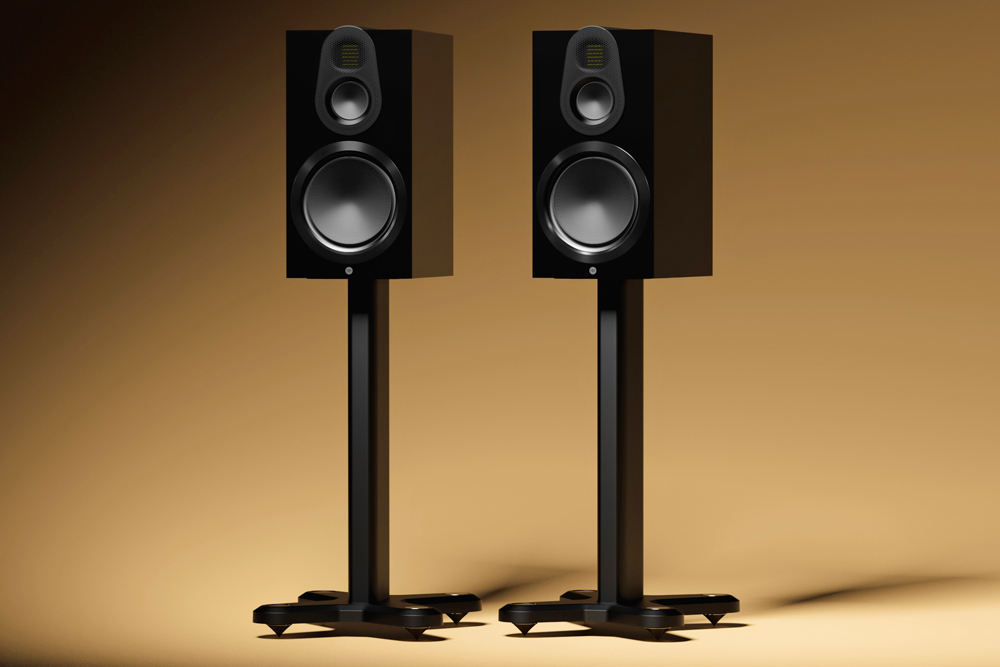What audiophile and music lover worth their mettle would forget the near-iconic Studio 20SE from UK’s Monitor Audio? Hearing that speaker back in mid-1990s at a now defunct audio store in Sydney, triggered a personal reassessment of the sweet spot in performance versus cost within the high-end loudspeaker space. Large enough to provide adequate low frequencies, expertly balanced with a marvellous blending between the mids and highs, and finished in the most luxurious veneers, the Studio 20SE was once heard, never forgotten. The company has exponentially blossomed since those days, as has its product portfolio. Here, I’m evaluating the brand new Gold 100 6G, Monitor Audio’s largest standmount speaker. Will the new speaker carry, and indeed build upon, its predecessor’s classic DNA imprint?
Golden Handshake
Yes, the Gold 100 6G is not only Monitor Audio’s biggest standmount, but it’s also a rather rare beast. It’s a 3-way standmount. These days, the fingers on one hand would cover the speaker models with that configuration. Of course, there are important advantages to a 3-way standmount over its almost ubiquitous 2-way brethren. The most obvious being the larger cabinet’s ability to mount a bigger dedicated woofer coupled to a more ample internal enclosure volume, both those features resulting in deeper and more powerful low frequencies. Plus, splitting the workload between three drivers may also result in a more dynamic presentation, given the dedicated bandwidth of each driver.
The trick, of course, is to overcome the crossover network challenges which, depending on the drivers’ design, may demand more complexity in order for the three drivers to handshake in a sonically balanced and coherent way. Get that right and you’re in the Goldilocks Zone.
Monitor Audio engineers and manufactures its own drivers in-house. Again, there are only a handful of loudspeaker makers who have the capabilities and resources to carry that through. Monitor Audio has employed advanced ceramic and aluminium composites for some time, refined through the current MPD III and HDT technologies which have been derived directly from the company’s revolutionary Hyphn flagship loudspeakers.
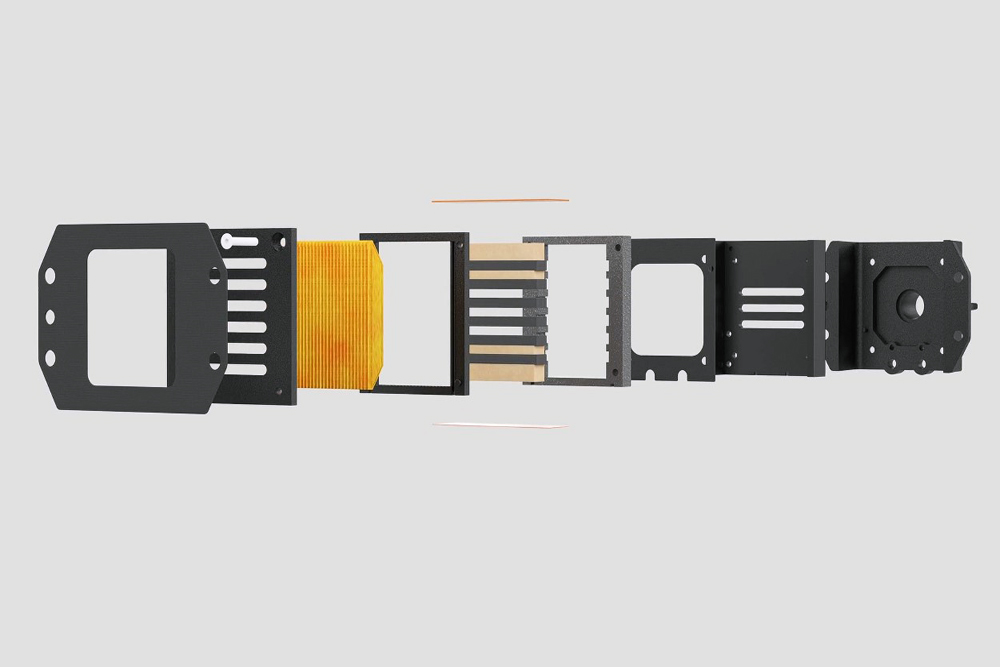
The Gold 100 G6 features a 3rd generation MPD III (Micro Pleated Diaphragm) foil tweeter as employed across the rest of the Gold line. The tweeter works in tandem with a 76 mm (3 inches) midrange driver featuring a HDT cone (Hexagonal Diaphragm Technology), which is constructed from a single layer of the company’s C-CAM tech. The cone’s hexagonal pattern is said to “disrupt symmetries”, shifting cone response breakup anomalies upwards outside the crossover point. The tweeter and midrange drivers are mounted onto a steel ‘mid-pod enclosure’ with a bespoke die-cast aluminium baffle.
HDT and C-CAM cone technologies are employed on the 203 mm (8 inch) woofer. C-CAM is a Ceramic-Coated Aluminium/Magnesium driver architecture which is said to be superbly stiff, yet lightweight, making for an efficient driver. The material composite was originally developed for jet engine componentry in the aerospace industry. The driver’s roll surround and spider design has been optimised with Finite Element Analysis (FEA) software. The woofer features a powerful magnet motor system, extended voice coil, and a lightweight aluminium chassis. An attractive anodised machined aluminium trim ring around the woofer hides any mounting bolts or screws.
The woofer’s output is supported via a HiVe II reflex port on the rear panel (High Velocity air flow is controlled to reduce chuffing), while “through-bolt technology” is used to tension the cabinet. Monitor Audio provides foam bungs for the Gold 100 6G which can be inserted into the ports to somewhat tailor the bass output, allowing placement closer to the front wall.
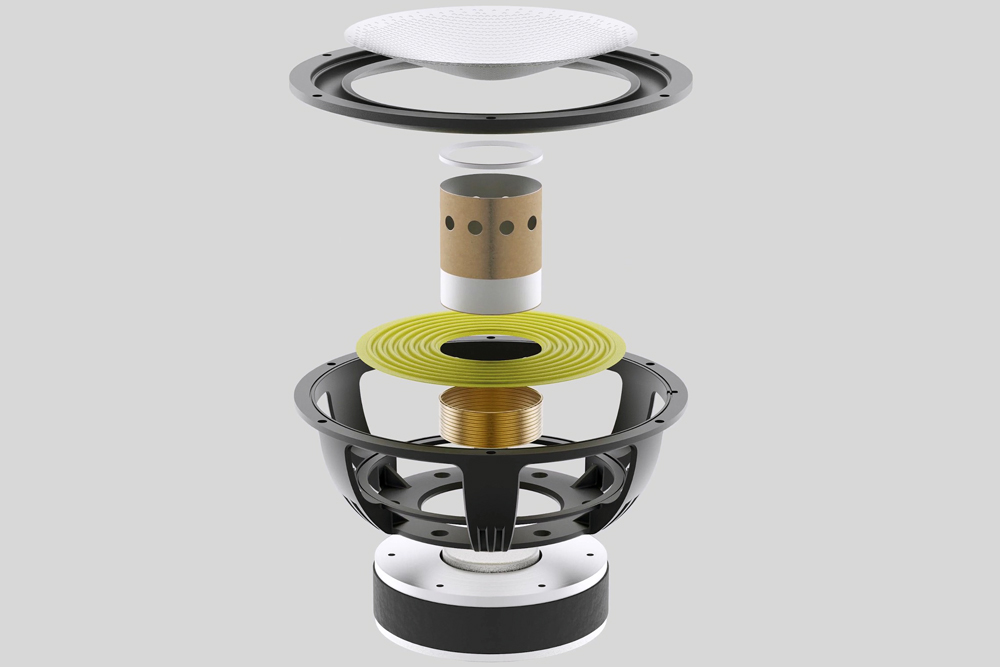
A concerted and extensive time period was dedicated to developing and testing the Gold 100 6G’s crossover network design. It features high quality components (including Monitor Audio branded capacitors and resistors), with the aim to smoothly blend the transducers’ output for an even and balanced response.
Monitor Audio quotes the Gold 100 6G’s in-room frequency response as spanning between 32 Hz and 60 kHz at -6dB (49 Hz to 60 kHz at -6dB free-field), with port tuning at 38 Hz. The crossover points are 700 Hz and 2.6 kHz. The nominal impedance is quoted as 4 ohms (3.9 ohms at 140 Hz) while sensitivity is said to be 86.5dB (2.83V at 1m free-field).
Beautiful cabinets have always been a trademark of Monitor Audio upper-tier loudspeakers. While the fabled Studio 20SE speakers I experienced were finished in a glorious, grained Rosewood, the Gold series is available in a stunning Macassar “man-made” sustainable veneer (review sample), plus High-Gloss Black and Satin White paint finishes. Monitor Audio offers the ST-2 Universal Stand as an additional option.
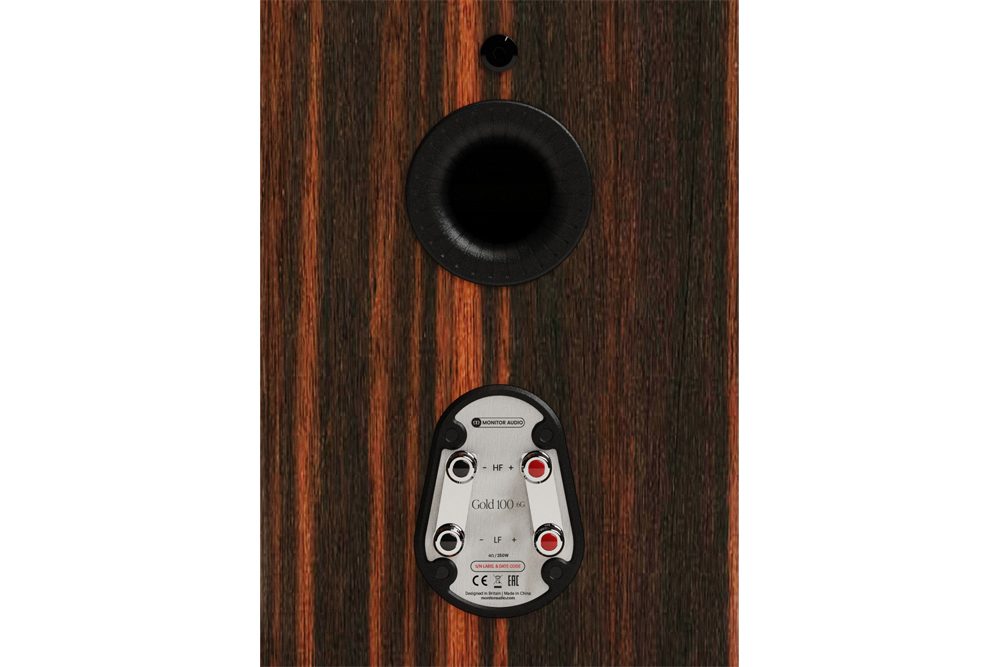
Build quality, as you’d expect from a large manufacturer such as Monitor Audio, was immaculate. Often, 3-way standmounts can look kind of awkward, yet the Gold 100 6G’s mix of proportion, its overall finish, the stealth magnetic grille mounting and fastener-free driver trim rings add up to a rather attractive design.
Finding Nuggets
I mounted the Gold 100 6G speakers onto Atacama three-column, sand-filled stands which I firmly spiked to the studio’s concrete floor, once the room position was locked-in. Given the rear port placement (I did not use the foam bungs), providing a bit of breathing room behind the speakers offered a better low frequency balance and deepened the soundstage dimensionality.
Some products promptly grab your attention due to an element of their sound reproduction which stands out from the get-go. With the Gold 100 6G it was the MPD III tweeter. Man, this thing can render immersive detail and musically-integrated instrument separation… And it does those things with a superb capturing of ‘air’ and finer harmonic content while also being vividly upfront… Gold 100 6G will never be boring.
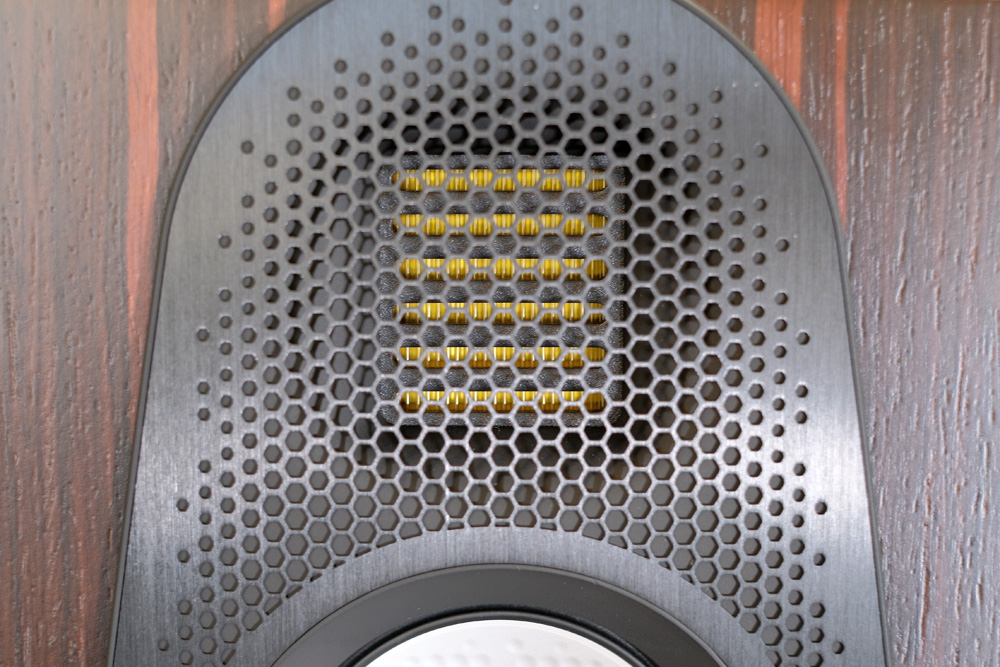
In fact, my notes have underlined the words “super-detailed with zero brightness”, followed by “balanced well with the subtly light midrange”. Those few words really describe, in a nutshell, what you first hear once you hook-up the G100s (for short) in the context of a neutral enough system.
The tambourine beats on “Fade Into You” from Mazzy Star’s breakthrough album So Tonight That I Might See sounded spookily real, to the point that you could almost count the number of cymbals (also known as jingles, as I found out) within the tambourine’s frame while clearly discerning Star’s hand-hit against its skin. Such were the resolution depths the G100s showed that the instrument was clearly separated from Star’s almost languid, slightly forward, and captivating vocals. Ditto for the slide guitar accents across the entire track, where every element of the song is expertly resolved.
Impressive too was the fine micro-dynamic detail produced across acoustic string instruments. On Pat Metheny’s Moon Dial, the custom-built baritone guitar on the title track plays with depth, excellent transient preservation and an overall tight sense of presence. The livelier “Shöga” track sounded more dynamic, more expressive in the shades between pp and ff while the complex multi-stringed chords showed a clarity which allowed the near-full discernment of individual strings (full discernment would be disruptive of the chord, of course).
While being a standmount, the G100s are nevertheless a large one, plus it’s a 3-way with a dedicated 203 mm woofer, so I was expecting the bass performance to be solid. It was a tad surprising, however, that it was deeper and more powerful than I expected. In fact, the lows would rival small floorstanders with its sheer fullness.
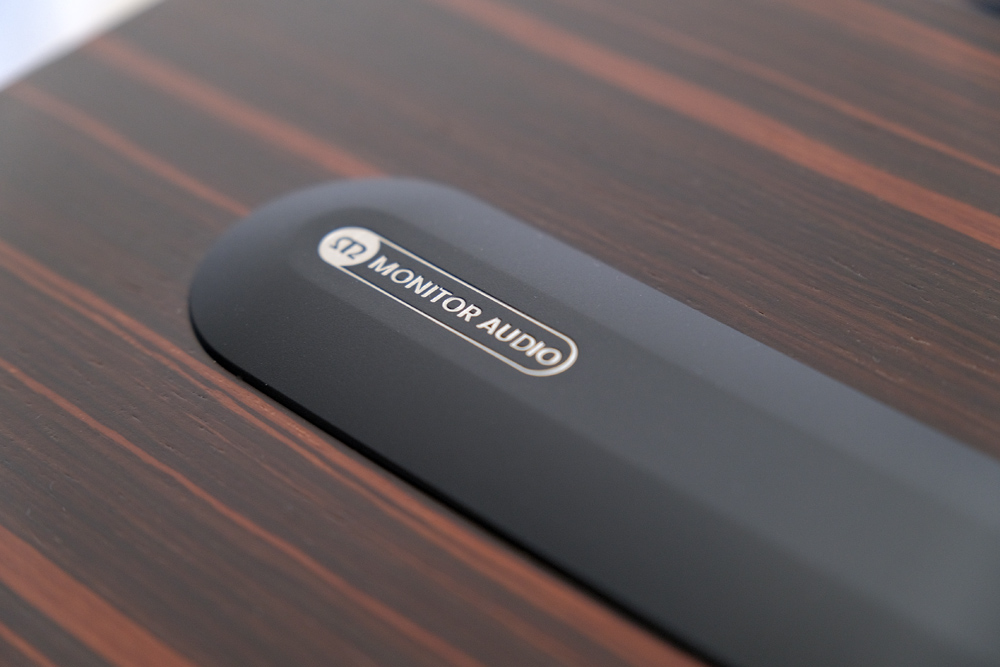
One of my go-to tracks for testing bass depth and presence is the title track “Tranceportation” from Sonar/David Torn. The low frequency lines were surprisingly deep and well-defined without swamping over the snappy snare and Torn’s guitar lines.
Ditto for the amazing interplays between the electric bass and guitar on “Just Breathe” from Charlie Robbins’ Syncatto album where the two instruments are juxtaposed: the bass down low and fast, the guitar up higher, equally fast and penetrating. There’s space in between the musical strands, no matter the complexity, for both instruments to shine.
Of course, all this clarity paid dividends with well-recorded vocals, be it male or female. “Autumn Leaves” from Arooj Aftab’s stunning modern jazz and Middle Eastern fusion album Night Reign, showed off her deep voice in a stunningly present way, locking her image in a central, solid position. The metallic percussion which rides along the vocals was independently separated without smearing. Her wavering expressions were clearly delineated, adding to the emotive feel of the track. Equal precision came across on the long keyboard solo, where the key notes were expressed with speed and definition.
Male vocals exhibited zero ‘chest’ colourations, no doubt this was helped by the very slightly lean lower midrange (or “light midrange” as per my notes described above). Iggy Pop on “Why Can’t We Live Together” from Dr. Lonnie Smith’s Breathe album, had the trademark vocal depth only very marginally reduced, yet this was counteracted by the sheer clarity in Pop’s tonal inflexions.
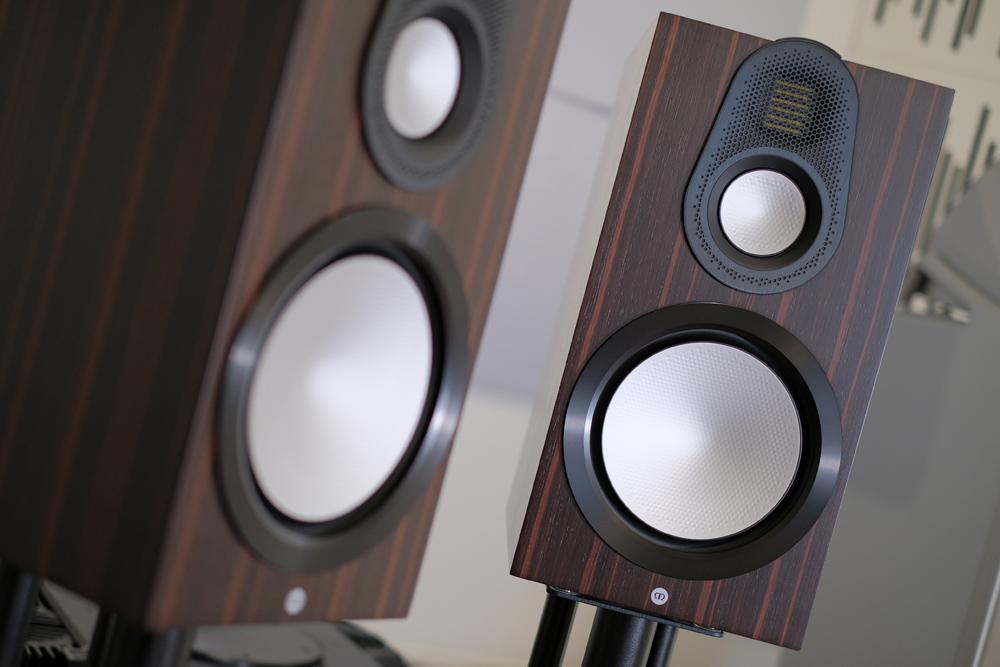
Like all good standmount speakers, the G100s are capable of excellent spatial information reproduction. The soundstage was deeply set, as was the width which spread across the room. My well-recorded reference live albums – if you’ve been reading my reviews for some time, you’ll know I use Ani DiFranco’s Live In Clip, Harry Belafonte’s and Ryan Adams’ Carnegie Hall concert albums, and many others – all rendered a massive soundfield where the depth perspective, especially, was impressive.
The same applied to orchestral recordings and film soundtrack albums, which are usually expansive vistas into the recording medium. Copland’s Fanfare For The Common Man on Reference Recordings with the Minnesota Orchestra conducted by Eiji Oue showed a tremendous three-dimensional space while the famous timpani drum passage was surprisingly powerful.
The piano conquered by maestro Radu Lupu on Schubert Impromptus (the Decca Legends release) sounded precise, transient-fast and tonally accurate. I know why this incredible recording is part of the Decca Legends catalogue… it’s truly stunning, both musically and in terms of its recording quality.
Conclusion
A somewhat rare animal the Monitor Audio Gold 100 6G may be, however, it benefits from its unusual configuration by providing small floorstander levels of dynamic expression and low frequency depth coupled to a more compact form factor.
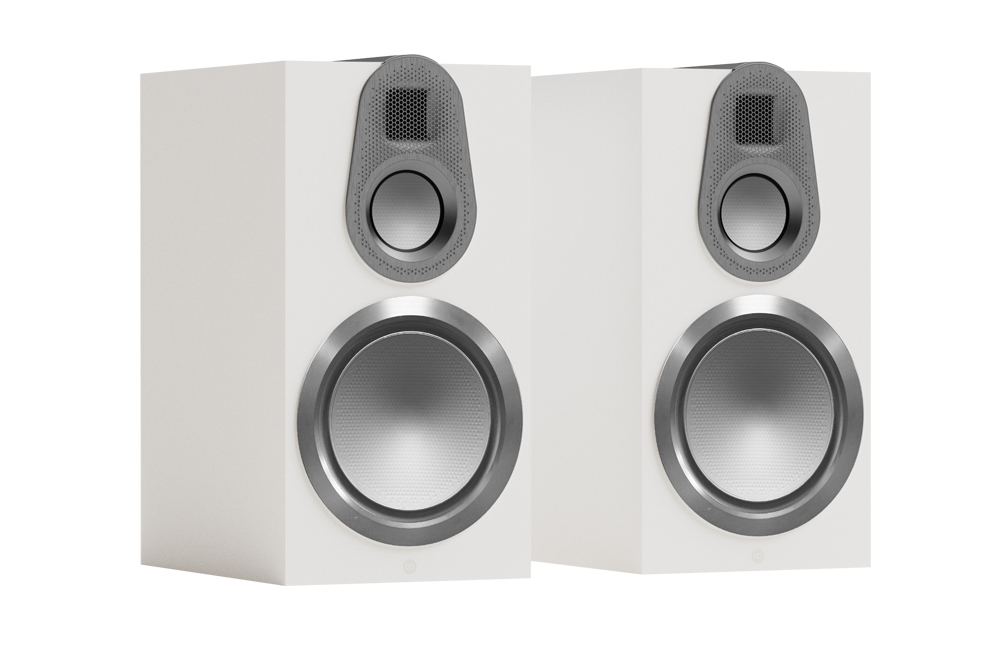
Gold 100 6G also takes full advantage of Monitor Audio’s substantial experience in engineering advanced materials technologies for its exceptional in-house built drivers. The result is a lively, captivating loudspeaker capable of outstanding levels of detail and resolution, consequentially providing deep insights into the music.
So, in a small to mid-sized space, the Gold 100 6G will offer the discerning listener a room-filling, dramatic presentation which is charged with life and excitement. And that, my friends, is where music truly lives…
… Edgar Kramer
This email address is being protected from spambots. You need JavaScript enabled to view it.
Associated Equipment
- Speakers — Wilson Audio Alexia V, Axis Loudspeakers VoiceBox S (nearfield monitor), Vermouth Audio Little Luccas Mk.II, Atacama stands
- Amplifier — Gryphon Audio Antileon EVO
- Preamplifier — Supratek Cortese, Totaldac d1-triunity (periodically, direct to amplifier)
- Sources — Digital:432 EVO Aeon Mk.3 Reference Music Server/Roon Core, Yamaha CD-S2100 transport, Totaldac d1-triunity DAC. Analogue: Transrotor Crescendo with Konstant Studio controller, Reed 1X Tonearm with upgraded internal wiring, Shelter Harmony cartridge, The Funk Firm Houdini cartridge decoupler, Supratek Cortese & REDGUM Audio RGPH2 phono stages
- Processor — DEQX PreMate (part of arsenal/casual use)
- Cables — VYDA Laboratories Orion Silver Reference HFC IC and speaker cables, PSC Audio custom design XLR, Vermouth Audio Reference loom,Tubulus Concentus USB
- Audio Rack — SGR Audio Statement Model V, Aspire Audio Belgravia amplifier platform (customised for Gryphon Audio Antileon EVO), Stereotech Aluminar Dark 3-tier rack
- Acoustic Treatment — Vicoustic Multifuser Wood, Wavewood Ultra, Cinema Round Premium and Super Bass Extreme
- Miscellaneous — Silent Angel Bonn N8 Pro network switch, GigaWatt PF-1 EVO power strip, Les Davis Audio Viscoelastic CLD discs, Voodoo Cable Iso-Pods, Bocchino Audio Mecado, VRC Vinyl Record Cleaning systemplus miscellaneous accessories
Monitor Audio Gold 100 6G Loudspeakers
Price: AU$6499
Australian Warranty: Five Years
Australian Distributor: Interdyn
+61 3 9426 3600
www.interdyn.com.au
Monitor Audio Ltd.
24 Brook Rd, Rayleigh
Essex SS6 7XJ
United Kingdom
+44 (0) 1268 740580
www.monitoraudio.com






